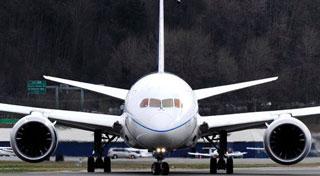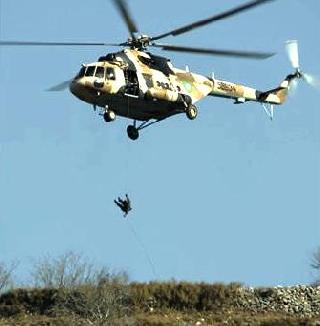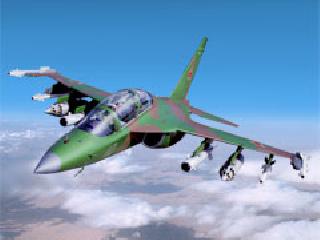
A file photo.
DUBAI (PTI): Boeing forecasts that airlines in the Middle East will need an estimated 2,520 airplanes worth USD 450 billion by 2030.
The forecast comes as the region's carriers continue to surpass global air traffic and capacity growth rates.
Boeing estimates that the size of the Middle East's fleet of passenger airplanes will grow from 1,040 airplanes at present to a projected 2,710 airplanes by 2030, an increase of 160 per cent.
Out of this, 34 per cent of the projected demand will be for airplanes to replace current aircraft, while 66 per cent will fulfill fleet expansion plans as the region's airlines gear up for significant growth over the next two decades.
As of September 14, 2011, Boeing had a backlog of 300 airplanes for delivery in the Middle East.
Customers in the region account for a large share of Boeing's twin-aisle backlog, including 26 per cent of the 777s and 15 per cent of the 787s on order.
Boeing currently has a total of 47 customers in the region that operate an estimated 1,200 flights per day on 425 Boeing airplanes.
"The Middle East has seen an unprecedented growth in capacity over the past 10 years and every indication points to a further, significantly large increase over the next 20 years," said Boeing Commercial Airplanes Vice-President of Marketing Randy Tinseth, who presented Boeing's Current Market Outlook at the 2011 Dubai Air Show.
"The region's airlines, with their forward thinking approach, have become a competitive force globally," he said.
Single and twin-aisle airplanes will account for 90 per cent of the Middle East's new airplane deliveries over the 20-year period, according to the Boeing forecast. An estimated 1,160 single-aisle jets, such as the Boeing 737 MAX, and 1,110 twin-aisle airplanes, such as the Boeing 777 and 787 Dreamliner, are expected to be delivered to the region during this period.
The remaining 10 per cent is split between large airplanes, such as the Boeing 747-8 Intercontinental, and will account for 7 per cent of projected demand, with an estimated 180 airplanes to be delivered to airlines in the Middle East.
Regional jets will account for the remaining 3 per cent.
"The collective capacity of three airlines, Emirates Airline, Etihad Airways and Qatar Airways, has grown by an average of 23 per cent annually over the past decade and we expect this trend to continue well into the future," Tinseth said.
"All three airlines base their growth strategies on the principle that newer, more efficient airplanes will provide a competitive advantage over their rivals from Europe and Asia," he said.
"This visionary approach of investing in the future has allowed the region's airlines to stay ahead of the competition. With a range of airplanes that fulfill the region's requirement for capacity expansion and improved operating efficiencies, Boeing is well-positioned to meet the region's needs," he added.
 Previous Article
Previous Article Next Article
Next Article













The Indian Air Force, in its flight trials evaluation report submitted before the Defence Ministry l..
view articleAn insight into the Medium Multi-Role Combat Aircraft competition...
view articleSky enthusiasts can now spot the International Space Station (ISS) commanded by Indian-American astr..
view article